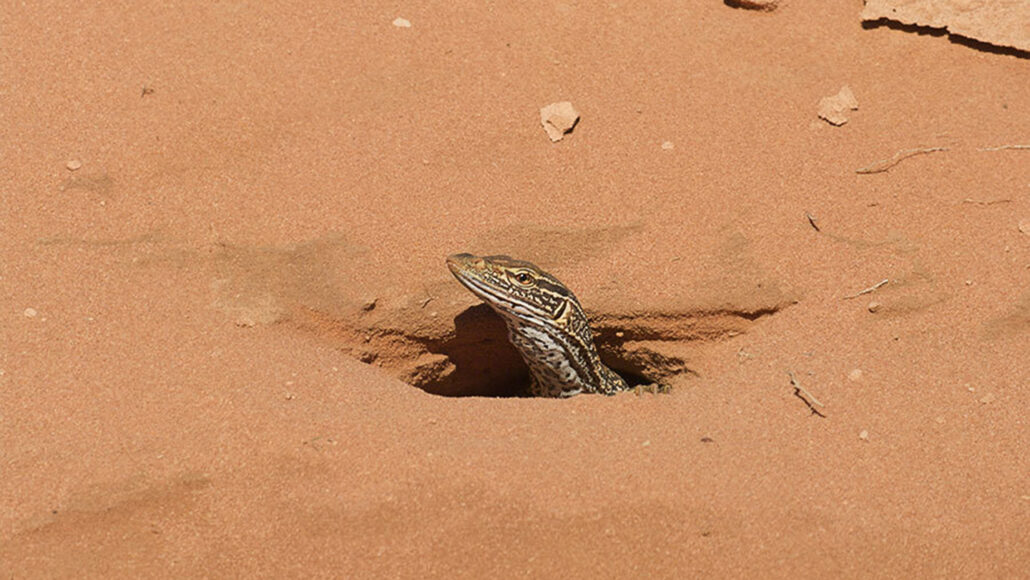A sand goanna (Varanus gouldii), a type of monitor lizard, peers out from a burrow entrance in Francois Peron National Park in Western Australia. Such burrows act as refuges for dozens of animal species.
JOHN SULLIVAN
Meters below the copper, sun-broiled dirt of northwestern Australia, an entire community hides in the dark. Geckos lay their eggs as centipedes and scorpions scuttle by. A snake glides deeper underground, away from the light. This subterranean menagerie is capitalizing on an old burrow, gouged into the earth by a massive lizard.
Now, a new study shows that two different species of Australian monitor lizard dig arrays of these burrows into the earth and that the openings have a great impact on local biodiversity, providing shelter to a surprisingly wide assortment of animal life. The findings, published December 18 in Ecology, indicate that the lizards are “ecosystem engineers,” akin to beavers that flood streams with dams or seabirds that fertilize reefs with their guano, the researchers say (SN: 7/11/18).
Sean Doody, an ecologist at the University of South Florida in St. Petersburg, started monitoring the cat-sized lizards in northern Australia with colleagues from Australia’s University of Canberra in Bruce and the University of Newcastle. The team was tracking how invasive, poisonous cane toads were adversely impacting the reptiles.














No comments:
Post a Comment
You only need to enter your comment once! Comments will appear once they have been moderated. This is so as to stop the would-be comedian who has been spamming the comments here with inane and often offensive remarks. You know who you are!